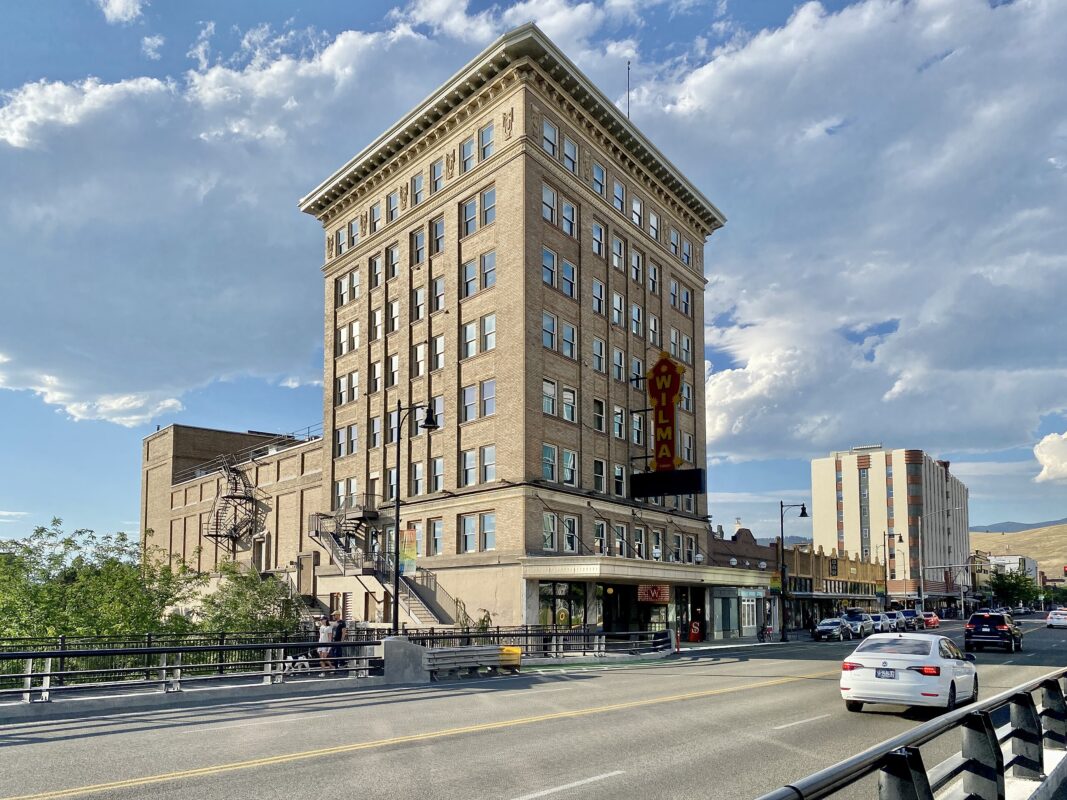Missoula, Montana, may be known for its breathtaking mountain landscapes, craft breweries, and vibrant arts scene—but there’s one gem that brings history, culture, and a touch of the paranormal together under one roof: The Wilma Theatre. Since its grand opening in 1921, this historic venue has long been a cultural cornerstone of Missoula. But beyond the curtain calls and classic architecture lies a mystique that has drawn historians, performers, and ghost hunters alike. From ghost lights to unexplained footsteps in the rafters, The Wilma Theatre is not just a stage for performers—it’s a stage for the unknown.
The History
From Vaudeville to Cinema: A Legacy Begins
The Wilma Theatre was built in 1921, commissioned by Edward “Billy” Simons, a renowned theater magnate, as a tribute to his wife, the famous opera singer Wilma Andrews. Simons partnered with architect Ole Bakke, who incorporated Renaissance Revival and Second Empire architectural elements to create a venue unlike any other in Montana at the time.
Upon opening, The Wilma was hailed as Montana’s first steel-framed high-rise and Missoula’s tallest building for many years. It originally included not just the ornate theater—a masterpiece of marble columns, gilded molding, and hand-painted ceilings—but also contained residential apartments and a medical facility. The Wilma quickly became the cultural heart of Missoula, showcasing a range of performances from silent films and vaudeville shows to symphonies and traveling opera troupes.
The Golden Age and Beyond
Throughout the 1930s to the 1950s, The Wilma Theatre transitioned into a full-fledged movie palace. Despite competition and the changing tides of technology, the Wilma continued to draw crowds with its rich programming and nostalgic ambiance. The theater survived the Great Depression, World War II, and the rise of television by adapting and preserving its charm.
By the late 20th century, local preservation efforts ensured the Wilma’s continued operation. Renovations in the early 2000s helped modernize the space while maintaining its historic character. It now hosts concerts, film festivals, comedy acts, and theatrical productions year-round, remaining a cornerstone of downtown Missoula’s cultural life.
A Historic Landmark
Designated a historic landmark and listed on the National Register of Historic Places, The Wilma Theatre represents more than just a venue—it is a symbol of resilience, artistic ambition, and the soul of the community. Walking through its grand lobby is like stepping into a different era, where echoes of the past whisper through the velvet seats and creaking floorboards.
The Haunt
Paranormal Activity Behind the Curtain
It wouldn’t be a historic theater without a few ghost stories, would it? Paranormal reports at The Wilma Theatre have persisted for decades, making it a favorite investigation site for ghost hunters and occult enthusiasts.
Staff and performers frequently report unusual occurrences—particularly late at night. Unexplained footsteps echo down empty hallways. Doors open and close on their own. A chill runs through the air despite the roaring heat. Ghost lights—faint orbs moving across the stage—have been captured in photographs and eyewitness accounts. Others claim to hear a woman’s voice singing softly when the building is quiet, a possible nod to Wilma herself.
The Lady in the Gown
One of the most persistent legends is that of a spectral woman in a flowing gown, seen drifting across the stage or standing in the balcony. Witnesses have described her as wearing early-20th-century formal wear, with a serene, almost melancholy expression. Some believe this entity is the spirit of Wilma Andrews Simons, eternally tied to the venue built in her honor.
The “Lady in the Gown” appears most often during theater renovations or after an emotionally charged performance. Her presence is not considered malevolent—rather, she seems protective of the space, like a spectral patron ensuring the show goes on.
The Locked Room Mystery
There’s also a curious space in the building—a locked storage room deep in the sub-levels—that seems to be a hotspot for hauntings. While used for utility access and old props, many who venture inside report intense feelings of anxiety or nausea. Technicians have claimed to hear scratching sounds from within, only to find nothing there. EMF (electromagnetic field) meters often spike inexplicably in this room, adding to the mystery.
Voices from the Other Side
During a 2016 paranormal investigation conducted by a local ghost hunting team, EVP (electronic voice phenomenon) recordings captured eerie phrases like “Not yet,” and “I’m waiting.” Investigators reported sudden battery drainage, malfunctioning equipment, and shadowy figures spotted darting at the corners of rooms. The findings were never conclusively explained but remain popular among the local paranormal community.
Why Ghost Hunters Should Visit The Wilma Theatre
For those with a taste for the eerie and an eye on history, The Wilma Theatre is a must-visit destination. As both a cultural landmark and a ghostly hotspot, it offers something for every curious traveler—be it photographer, historian, or spirit seeker.
Bring your EMF detectors, thermal cameras, and voice recorders, and prepare for a night of historical immersion and spectral surprises. Plus, the surrounding downtown area provides easy access to cozy cafes and gastro pubs, where you can share your findings with fellow investigators over a pint or plate of Montana’s finest fare.
The Wilma Theatre’s spellbinding mix of historic grandeur and lingering mystery creates the perfect setting for your next paranormal expedition. So the next time you’re in Missoula, step into The Wilma—where the past performs nightly, and the spirits never miss a show.

